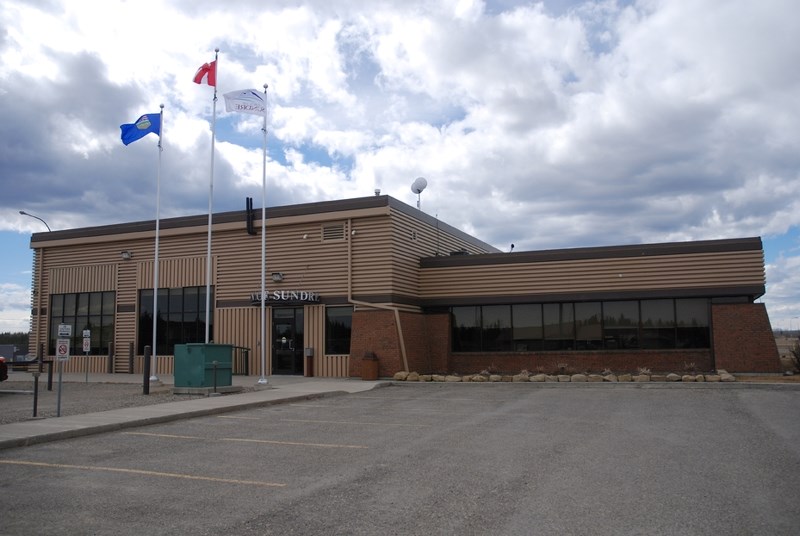Investing in a publicly owned broadband network could potentially generate substantial revenues, even based on conservative buy-in rates from residents and businesses, council heard last week.
Providing the new members of council with updated background information on the feasibility study to deploy a municipally owned broadband network, administration said a two-phase project would provide 86 per cent of Sundre residents with access to broadband in the first year of deployment, while the remaining 14 per cent would have the option to sign up the following year.
That's because whereas the vast majority of the community could be connected through aerially deployed infrastructure mounted on Fortis utility poles, a smaller portion of Sundre's northeast does not have utility poles and so the broadband lines would have to be trenched and buried at a much greater cost, said Jon Allan, economic development officer.
"Another thing that we would need to get us there is an electronics hub; it's basically like the brain of the network. We'd need a home for that," he said, adding fibre optic lines would also be strung along the Red Deer River Bridge to connect Sundre's east side.
There are two options to implement broadband outlined by administration. One is a fully private venture that would pass on the risk along with all of the reward to a company that would keep all revenue generated. The other possibility is a kind of public-private partnership whereby the municipality would own the network, which would then be rented out to service providers that would provide residents and businesses with access to high-speed Internet, he said.
"We would not be the service provider, we would simply own the infrastructure, and private companies would pay us for the right to sell service to the public," he said, adding revenues generated could boost reserves or reduce the tax burden as per council's discretion.
Vic Pirie, director of finance and administration, also offered some insight on the costs and rewards of investing in municipally owned infrastructure.
"It is expensive to put in the infrastructure for broadband. There's no getting around it. That's why we don't have it now ó if it was inexpensive we'd have a business already doing it for us," said Pirie.
So a public venture would require coming up with the capital cost of the roughly $3-million project, which would include debenture borrowing. However, based on conservative penetration rates of only 30 per cent residential and 50 per cent commercial, the municipality could after about five years already be seeing a net-positive flow of income including debt servicing. Those projected revenues ó which at conservative buy-in rates would eventually represent about $130,000 a year ó include the anticipated costs of operating and maintaining the network, he said.
"There is a net positive downstream benefit for the public option for future councils. It wouldn't happen for roughly about 10 years, but at some point down the road, it would be generating net positive cash flows that could actually be utilized on an annual basis."
Should council choose to proceed with a private option, residents and businesses would still receive roughly the same level of service from a company at no financial risk to the municipality. However, the community would also forgo future revenues, he said.
Before proceeding any further with the public option, Allan told council the utility poles upon which the fire optic lines would be mounted must first be surveyed to determine their suitability. Between engineering costs and fees charged by Fortis, a detailed deployment plan is estimated to run up a tab of roughly $150,000.
The economic development officer also reminded council that a survey conducted by an objective, third-party consultant last spring indicated buy-in rates could be much higher than administration's conservative figures, meaning the project could potentially be paid back in full and generating a revenue stream much sooner than anticipated.
Also, the municipality could immediately begin plans to deploy a public network in the coming years, possibly starting as early as late next spring, whereas the private option would leave the community waiting on a company's timeline, he said.
Administration informed council additional direction would be requested during the Dec. 11 meeting, and that a decision to move forward with the detailed deployment plan would indicate a preference towards the public option as there would be no sense in spending those funds if the private option is chosen.
Council carried a motion to accept administration's report for information.
Vic Pirie, director of finance and administration
"There is a net positive downstream benefit for the public option for future councils. It wouldn't happen for roughly about 10 years, but at some point down the road, it would be generating net positive cash flows that could actually be utilized on an annual basis."



